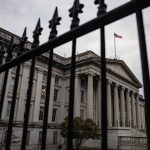Sep 30, 2022
VOT Research Desk
Key Insights and Analysis
Friday’s mixed performance in global stocks stemmed from weaker factory activity in China and record inflation in 19 euro-zone nations.
Frankfurt and London opened higher. Hong Kong moved ahead while Shanghai and Tokyo went down.
After the benchmark S&P 500 index fell to its lowest level in nearly two years on Thursday, Wall Street futures rebounded. Oil prices started to rise
.
According to Eurostat, inflation in Germany, France, and other countries in the euro zone increased to 10% in September from 9.1% the month before.This was the highest figure since the euro began keeping records in 1997.
After aggressive interest rate hikes this year by the U.S. Federal Reserve and central banks in Europe and Asia to cool inflation, which is at multi-decade highs, investors are increasingly concerned that the global economy might enter a recession.
After British Prime Minister Liz Truss announced plans for tax cuts that investors fear will raise inflation, markets fell this week. Meanwhile, oil and gas markets have been disrupted by Russia’s attack on Ukraine, and export demand around the world is declining.
In a report, ING economists stated, “We’d be inclined to argue that we haven’t yet seen the bottom.”
According to German Chancellor Olaf Scholz, the world’s fourth-largest economy faces a “double whammy” from rising energy costs and inflation on Thursday.
The London FTSE 100 gained 0.7 percent to 6,929.43 and the Frankfurt DAX gained 0.7 percent to 12,064.73.5,708.42 was the Parisian CAC 40’s 0.6% increase.
The S&P 500 future was 0.6% higher on Wall Street. That was up 0.4 percent for the Dow Jones Industrial Average.
After robust employment data in the United States bolstered expectations that the Federal Reserve will stick to its plans for additional interest rate hikes, the S&P 500 fell 2.1% on Thursday to its lowest level in nearly two years.
The Nasdaq composite lost 2.8% and the Dow lost 1.5%.
After surveys of manufacturers revealed that factory production, new export orders, and manufacturing employment declined in September, the Shanghai Composite Index fell 0.6% to 3,024.39 in Asia.
The Hang Seng in Hong Kong rose 0.5 percent to 17,257.08, while the Nikkei 225 in Tokyo lost 1.8% to 25,937.21.The Seoul Kospi fell 0.7 percent to 2,155.49.
The S&P ASX 200 in Sydney fell 1.2 percent to 6,474.20, while the Sensex in India rose 1.8 percent to 57,421.45.The markets in Southeast Asia and New Zealand declined.
Wednesday saw a rebound in the value of the British pound and stock markets following the Bank of England’s announcement that it would purchase government bonds to support their price. However, markets retreated on Thursday after Truss defended her tax-cut plan in the face of criticism, despite a request from the International Monetary Fund to change course.
The S&P 500 is on track to finish the month of September with a loss of 8%.As investors wait for a break in inflation, which has prompted the Fed to raise interest rates five times, it is down more than 20% for the year.
The difference between the market price of a two-year U.S. Treasury and the payout at maturity, or yield, increased to 4.2% on Thursday from 4.14 percent on Wednesday.
Thursday’s stronger-than-expected employment data in the United States bolstered expectations that the Federal Reserve will be content to stick to its plans to raise interest rates further and keep them high into the coming year.
Production and new export orders decreased in China, according to surveys of manufacturers conducted by an official industry group and the business news magazine Caixin. That was consistent with expectations that weak global demand would end a Chinese manufacturing boom.
According to a report written by Capital Economics’ Zichun Huang, “The downturn in external demand looks set to deepen.”
In electronic trading on the New York Mercantile Exchange, benchmark U.S. crude lost 49 cents to $81.72 per barrel in energy markets.
On Thursday, the contract fell to $81.23 by 92 cents. In London, Brent crude, which is used to price international oils, decreased by 58 cents to $87.76 per barrel. The previous session saw it drop 83 cents to $88.49.
The dollar fell to 144.40 yen from 144.43 yen on Thursday. From 97.90 cents,









